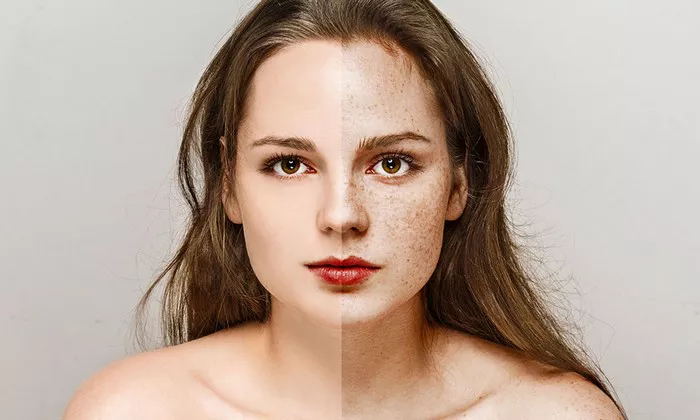Freckles are small, flat, brown spots that can appear on the skin when exposed to the sun. While freckles are common on the face and arms, they can also suddenly appear on the legs. In this article, we will explore the causes of freckles on the legs, including sun exposure, genetics, and hormonal changes.
Sun Exposure
The most common cause of freckles on the legs is sun exposure. When the skin is exposed to the sun, it produces a pigment called melanin to protect itself from the harmful effects of UV rays. This melanin can sometimes clump together, forming freckles. People with fair skin are more susceptible to freckles, as they produce less melanin than people with darker skin.
Genetics
Genetics can also play a role in the development of freckles on the legs. Freckles are often hereditary, meaning they can be passed down from parents to their children. If one or both of your parents have freckles, you are more likely to develop them as well.
Hormonal Changes
Hormonal changes can also cause freckles to suddenly appear on the legs. Hormones like estrogen and progesterone can stimulate the production of melanin, which can lead to the development of freckles. This is why freckles are more common during puberty, pregnancy, and menopause.
Other Causes
Other factors that can contribute to the development of freckles on the legs include:
Age: Freckles are more common in children and young adults, but they can develop at any age.
Medications: Certain medications, such as birth control pills and hormone replacement therapy, can increase the risk of freckles.
Skin damage: Skin damage, such as cuts, burns, and insect bites, can trigger the development of freckles.
Chemical exposure: Exposure to certain chemicals, such as those found in hair dyes and perfumes, can increase the risk of freckles.
Treatment Options
Freckles on the legs are usually harmless and don’t require treatment. However, if you are concerned about the appearance of your freckles, there are several treatment options available:
Topical creams: Topical creams containing hydroquinone, retinoids, or corticosteroids can help to fade freckles over time.
Laser therapy: Laser therapy can be used to target and break up the pigment in freckles, causing them to fade.
Chemical peels: Chemical peels can help to remove the top layer of skin, which can reduce the appearance of freckles.
Prevention
The best way to prevent freckles on the legs is to protect your skin from the sun. This includes:
Wearing protective clothing, such as long-sleeved shirts and pants.
Applying a broad-spectrum sunscreen with an SPF of at least 30 to all exposed skin.
Avoiding sun exposure during peak hours, typically between 10 am and 4 pm.
Seeking shade when outdoors.
Wearing a wide-brimmed hat to protect your face and neck.
Conclusion
Freckles on the legs can be caused by a variety of factors, including sun exposure, genetics, and hormonal changes. While freckles are usually harmless, if you are concerned about their appearance, there are several treatment options available. The best way to prevent freckles on the legs is to protect your skin from the sun by wearing protective clothing, applying sunscreen, and seeking shade when outdoors.
FAQs
1. Why do I suddenly have freckles on my legs?
Sudden appearance of freckles on the legs can be attributed to various factors including sun exposure, genetics, hormonal changes, and age. Sun exposure triggers melanin production in the skin, leading to the development of freckles. Additionally, hormonal changes, such as those experienced during puberty or pregnancy, can stimulate melanin production, resulting in the appearance of freckles.
2. What does it mean when freckles appear out of nowhere?
The sudden appearance of freckles on the legs may indicate increased sun exposure or hormonal changes. Freckles often emerge when the skin is exposed to UV radiation, causing melanocytes to produce more melanin, resulting in pigmented spots. Hormonal fluctuations, such as those occurring during puberty, pregnancy, or menopause, can also contribute to the development of freckles.
3. Can a freckle show up overnight?
While freckles typically develop gradually over time with repeated sun exposure, it’s unlikely for a freckle to appear overnight. However, certain factors like intense sun exposure or hormonal changes can accelerate melanin production, causing freckles to become more prominent relatively quickly.
4. How to get rid of freckles on legs?
Freckles on the legs can be challenging to eliminate completely, but options such as topical treatments containing ingredients like hydroquinone or retinoids, laser therapy, chemical peels, or cryotherapy may help lighten or reduce their appearance. However, it’s essential to consult a dermatologist for personalized recommendations and to ensure safe and effective treatment. Additionally, practicing sun protection measures such as wearing sunscreen and protective clothing can prevent further freckle formation.


